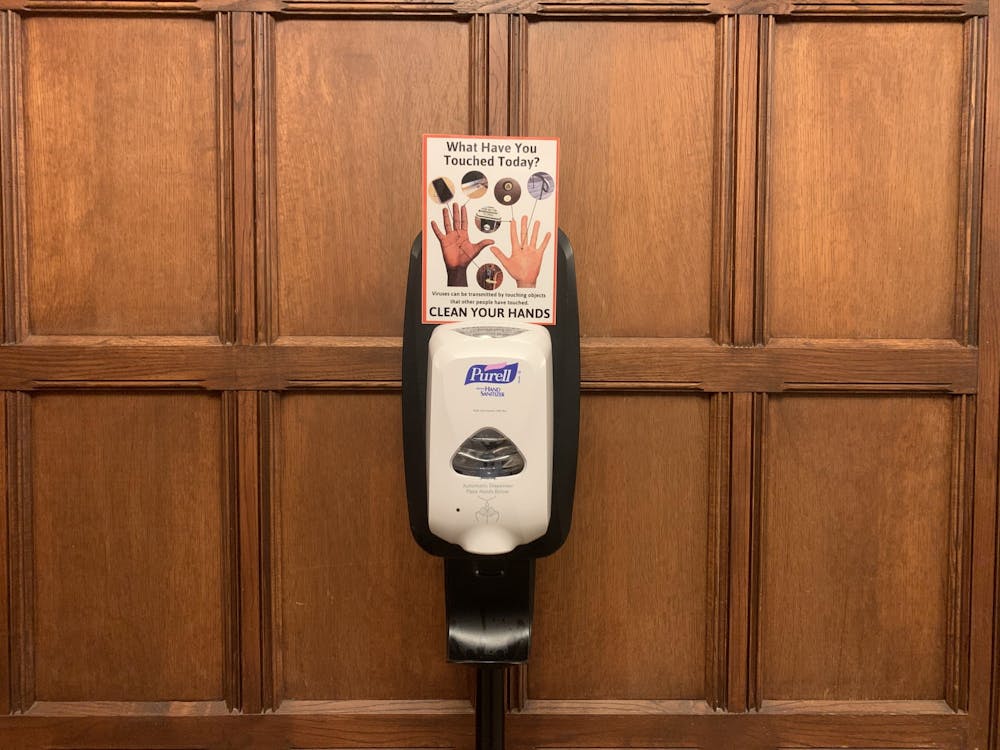A recent study on the stability of the virus that causes COVID-19, coauthored by Dylan Morris GS, in the Ecological and Evolutionary Biology department, reveals that the virus can be stable for hours to days on surfaces and in aerosols.
The study was published in the New England Journal of Medicine this month in collaboration with scientists at the National Institutes of Health, Center for Disease Control, University of California, Los Angeles, and the University. Morris, whose research focuses on viral evolution, contributed key data analysis and statistical modeling.
“First is that this virus doesn’t stick around forever in the environment, but it doesn’t disappear immediately,” said Morris.
The study looked at the stability of the virus on surfaces and in the air. Researchers mimicked conditions where the virus would be deposited onto everyday surfaces and objects — like when an infected person sneezes or coughs into his hand, and then touches a doorknob.
They then quantified the amount of virus that remained after a certain period of time. The authors compared the results with those of SARS-CoV-1, a related coronavirus responsible for the 2002–2003 SARS pandemic that killed over 8,000.
SARS-CoV-2, the coronavirus that causes COVID-19, was detectable on copper surfaces for up to four hours and for up to 24 hours on cardboard. On stainless steel and plastic, it was detectable for up to two to three days.
Researchers also aerosolized the virus into small droplets similar to the respiratory droplets of saliva and mucus that form in the air when someone sneezes or coughs.
The virus was detectable in such aerosols for up to three hours. Transmission by aerosols is not equivalent to “airborne transmission,” which occurs when viral particles remain in the air for much longer periods of time and continue to spread even in the absence of close person-to-person contact.

Aerosol transmission has implications for health care workers who treat infected patients. Ventilators, needed to keep patients with severe symptoms alive, aerosolized viral particles and can make health workers sick, Morris said. This makes it even more important that hospitals have access to face masks and other personal protective equipment.
The study also found that SARS-CoV-2 is broadly comparable to SARS-CoV-1, with similar lengths of time that the virus remained detectable on surfaces and aerosols. This indicates that the primary reason for the increased spread of the recent coronavirus, as compared with the 2002–2003 SARS outbreak, is not due to its ability to persist in the environment.
“It’s probably due to something else,” Morris said.
One of the factors that scientists have been considering is the possibility of asymptomatic transmission.

“That is, you can get other people sick before you know you are sick,” Morris explained.
This makes it difficult to isolate patients before they infect others, allowing the virus to circulate. It is also one of the reasons why some health officials advocate testing for COVID-19 even before an individual exhibits symptoms.
The study has received extensive coverage, with a number of reports focusing on how long the virus persisted. But Morris emphasized that while knowing the amount of time the virus was detectable on surfaces was useful, it was not the most important number. Instead, the half-life, or the amount of time it takes for half of the viral particles to decay away, deserves more attention.
According to Morris, the half-life is a more accurate measure of the persistence of the virus, because it does not depend on the number of viruses that were there in the first place. For instance, while SARS-CoV-2 can persist on stainless steel for up to several days, its half-life on the surface is less than six hours.
This means that if an infected person transfers hundreds of millions of viral particles to a doorknob, half of them will be gone in six hours. In 12 hours, only a quarter will be left. By knowing the decay rate, scientists can estimate how long it will take for any amount of the virus to become undetectable, making it more applicable to everyday situations.
COVID-19 is thought to be primarily transmitted through close contact, like when an individual sneezes or coughs and tiny droplets of the virus enter the respiratory tract of another person standing nearby. It may also be transmitted when someone transfers virus particles existing on an object or surface to their eyes, mouth, or nose.
The findings from the study lead to important questions that Morris and other researchers are currently trying to answer to better understand this process of transmission.
“How much virus does a sneeze put out? How much virus needs to be left for you to have a high chance of getting sick?” Morris said. “Once you put that together with what we know about stability, then you have a complete picture of a transmission event.”
The study authors also affirmed current guidelines from public health officials to decontaminate frequently touched surfaces, wash hands, and cover coughs and sneezes with a tissue.
Features Staff Writer Daniel Burgess contributed reporting.








